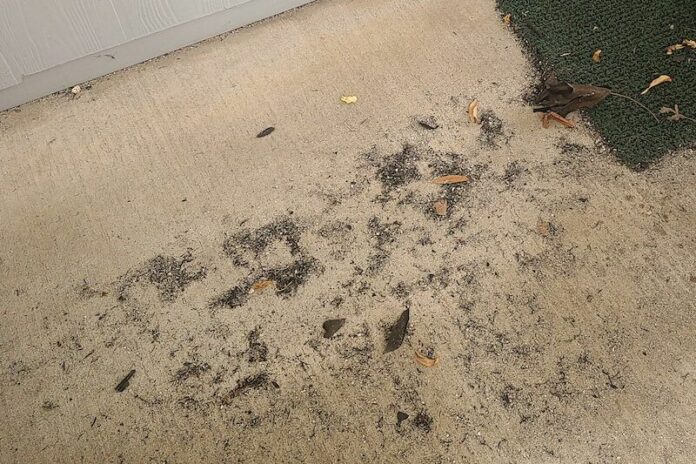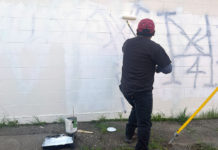As the smoke from the most recent set of fires in Sonoma County clears, the ash left behind can cause challenges to remove. Social media is filled with posts warning of dangers from ash cleanup that may not be accurate, while other dangers are ignored.
Cloverdale’s neighbors to the south, the town of Windsor has released a series of guidelines to help educate residents on the safest way to remove ash from their environment.
“Cleaning up the ash and leaves from our backyards, landscapes, yards, and streets will eventually help clean our air and our community, but it must be done safely. Smoke and ash can be harmful to your health and the health of those around you,” said the town in a statement. “The greatest risk is from fine particles that are not visible. The information (provided) is for residents and those who are cleaning up ash, not those cleaning up burned structures. If you lost your home or business to the fire, you need to take additional precautions.”
Before beginning any clean-up, it is important to protect yourself. Residents should avoid cleaning up ash until air quality conditions improve and it’s safe to be outdoors. Decisions about when to clean should be based on the level of fine particles and the air. The town recommends using https://www.nosocoair.net/air-quality.html to determine local air quality.
Individuals with heart or lung conditions should not handle ash or do clean-up, and everyone should use a NIOSH N-95 or P-100 particulate respirator mask.
Inhaled ash may be irritating to the nose, throat and lungs. It is recommended to choose a mask with two straps and make sure it fits snugly around your nose and chin. Surgical masks, bandanas, and other paper masks do not protect your lungs from the fine particles that are of greatest concern.
In addition, skin contact with ash should be avoided and you should always be aware of others cleaning around you. If you have a garden, be sure to thoroughly wash fruit and vegetables to remove ash and particulates before eating.
The basic rule of ash removal is what is called the three C’s: control, contain and capture.
Control
Try to control the amount of ash particles that get re-suspended into the air. Never use a leaf blower to clean up ash or leaves that have ash on them, as it simply blasts the ash and particulate into the air. If you are using a household or shop vacuum, only use those that have HEPA filters, so keep the particulate from simply blowing out of the vacuum.
Do not, under any circumstances, allow children or pets to play in the ash.
Contain
Using appropriate cleaning methods for the task at hand is the key to keeping ash and particulate matter contained during clean-up. First, gently sweep up the ash with a push broom and remove, the mop hardscapes with a damp cloth or hose lightly with water.
Scrape ash leaves and other debris into plastic bags and dispose in the regular trash, not the yard waste container. Soft surfaces such as carpet, upholstery and window treatments may require professional cleaning services.
Capture
Ash has a high pH and, in large amounts, can be harmful for people, the environment and aquatic life. Therefore, it is critical to protect storm drains from ash and run off.
Divert water away from storm drains or try to filter the wash water with gravel bags, filter fabric, fiber rolls, etc., in front of storm drains. Scoop up captured ash and debris and dispose of appropriately. If washing roof areas, redirect downs spouts to garden areas to avoid runoff into storm drains. Ash will not hurt plants or grass but will hurt the storm drains when the water reaches the creeks.
For more information and additional links on removing ash from your property, go to: https://www.townofwindsor.com/CivicAlerts.aspx?AID=1275.








